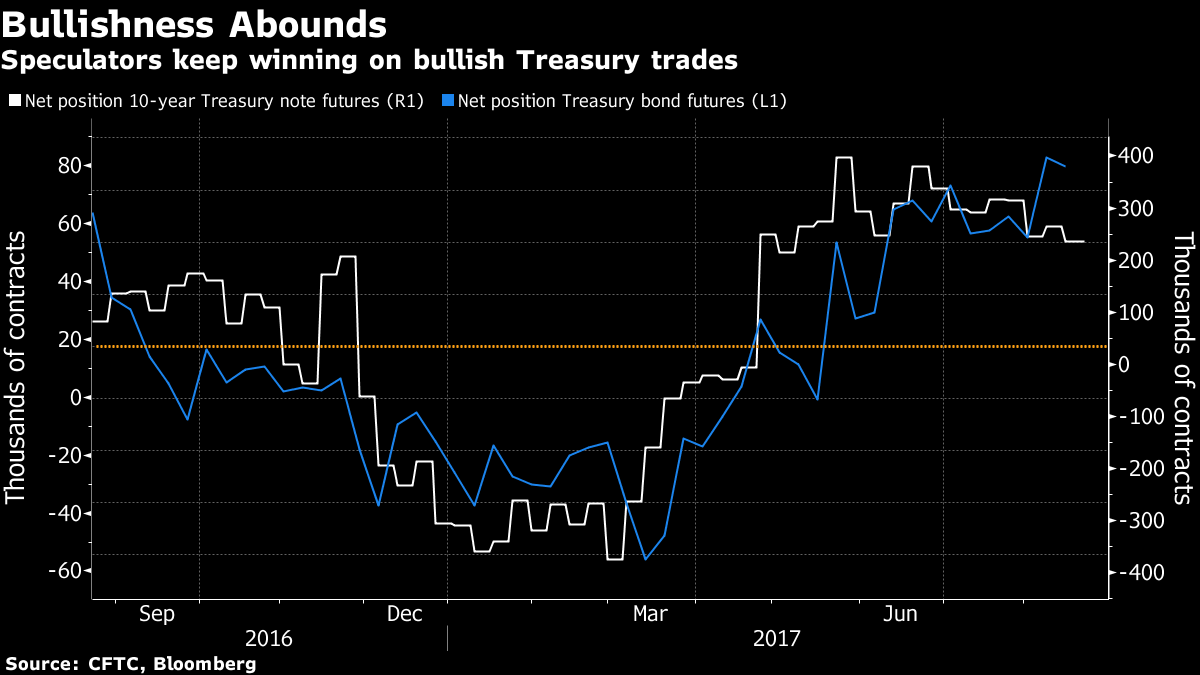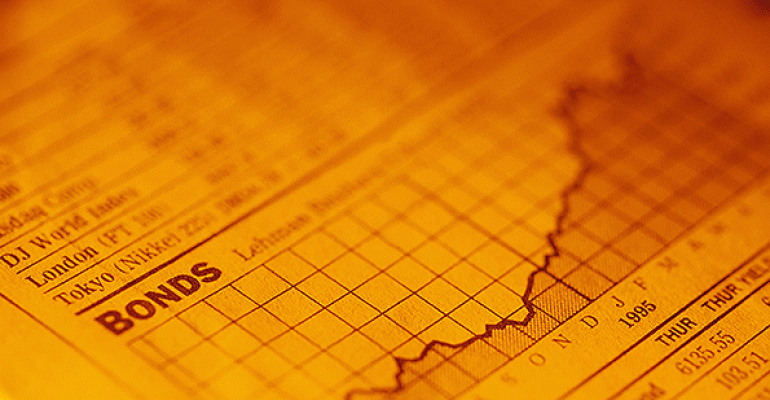By Liz Capo McCormick
(Bloomberg) --Years into what may be the most-hated government-bond rally in history, the challenge for traders is that they keep losing if they’re not in it.
The phenomenon is fostering the “golden” trade, as Societe Generale strategists call it, of owning longer-duration debt, but with some protection if it all blows up. That’s the result that a growing chorus, including former Federal Reserve Chair Alan Greenspan, is warning against as yields remain close to historic lows.
“The problem is there has been no catalyst for being short the market, even though it looks like there are a lot of good reasons for it,” said Subadra Rajappa, head of U.S. interest-rate strategy at SocGen. “You are in a Goldilocks scenario because you have low inflation and the market pricing a much-less-aggressive Fed. But bond valuations are quite rich.”
Hedge funds and other large speculators have been bullish long-term Treasuries since last quarter, U.S. Commodity Futures Trading Commission data show. Their position flipped as wagers that yields would rise began to unravel and as inflation data disappointed.

Whether it’s a surprise from the Fed or inflation bubbling up, or some other unforeseen trigger, any misstep could be costly for bond bulls, with 10-year notes yielding about 2.2 percent, not far above their 2017 lows.
With yields this low, a jump of one percentage point would lead to about a $456 billion decline in value for the Bloomberg Barclays U.S. Treasury Index, based on a measure called duration. The index has returned 2.9 percent this year, while a global sovereign index has gained 7.5 percent.
“The golden trade is to be long duration, and that’s worked out great so far,” Rajappa said. “The risk is you see a reversal, as we know being long bonds doesn’t work all the time. And we’ve seen the big sell-offs before.’’
To contact the reporter on this story: Liz Capo McCormick in New York at [email protected] To contact the editors responsible for this story: Boris Korby at [email protected] Mark Tannenbaum




